On July 6, 2025, the Himalayan foothill town of Dharamshala witnessed a grand celebration. The 14th Dalai Lama, Tenzin Gyatso, turned 90 years old and blessed the crowd of devotees gathered to offer their good wishes at the Tsuglagkhang, also known as the Dalai Lama Temple complex.
This town has been the residence of the Dalai Lama since 1959, and the spiritual epicentre of the movement for Tibetan autonomy. The Dalai Lama, the head of Tibetan Buddhism and a venerated religious figure, arrived here fleeing from Tibet, fearing for his safety under the Chinese government. He was granted political asylum by India under the leadership of Prime Minister Jawaharlal Nehru.
We trace the Dalai Lama’s journey through the treacherous Himalayan terrain, and look at what prompted the escape in the first place.
Fleeing Tibet
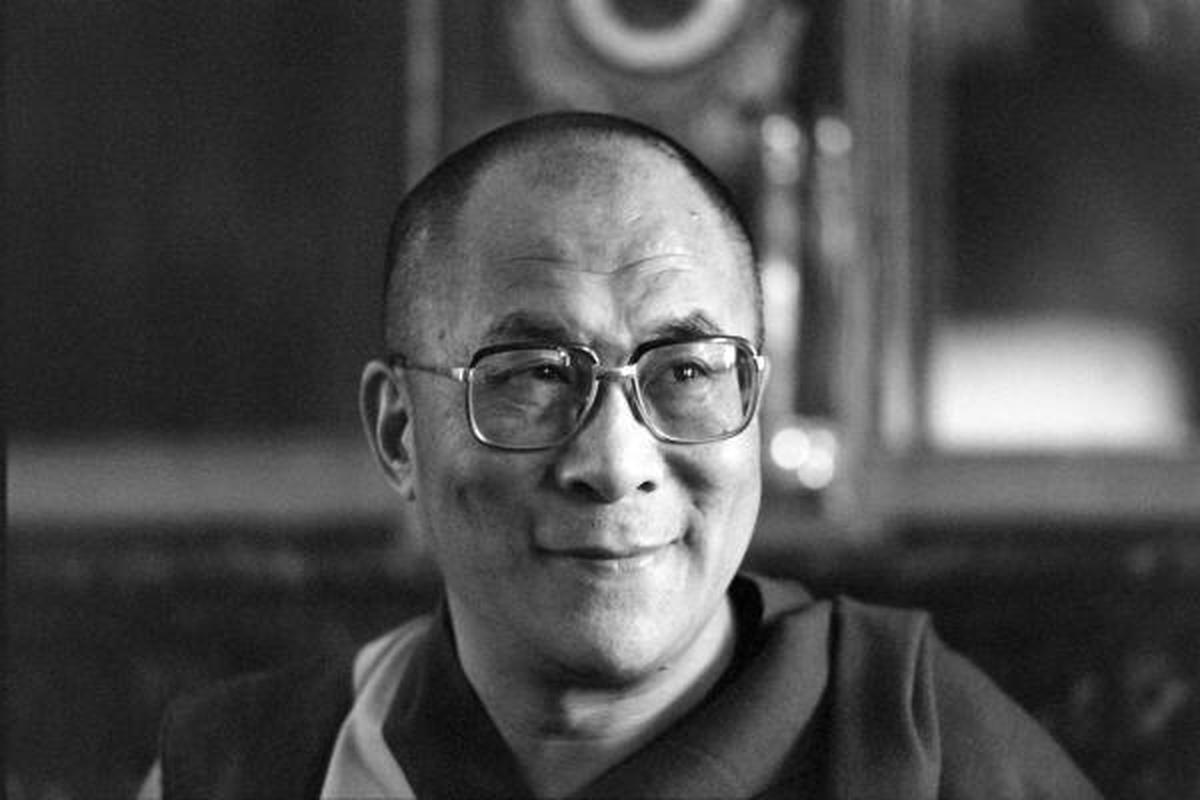
Tibetan spiritual leader the Dalai Lama during his visit to the Bec Abbey in Le Bec Hellouin on May 30, 1986.
| Photo Credit:
AFP
China has a deeply complex political history, moving from the age of Chinese dynasties to Mongol emperors, again back to Chinese monarchs and feudal warlords before the gradual creation of a republic. In 1949, the Chinese Communist Party under the leadership of Mao Zedong triumphed over the Nationalist Party or Kuomingtang (KMT) founded by Sun Yat-Sen, and came to power at the Centre.
This regime sought the reunification of Tibet with China and the People’s Liberation Army occupied the region in 1950. In May 1951, the two sides signed a 17-point agreement indicating that Tibet would have regional autonomy and control over political institutions and internal administration. The Chinese central government was to be responsible for foreign relations. The Chinese army was to enter Tibet for national defence purposes and gradually absorb the Tibetan forces. A Chinese military and administrative commission, as well a military headquarters, were to be set up in Tibet.
A preparatory committee was set up for Tibet in 1956, with the Dalai Lama as Chairman, the Panchen Lama as Vice-chairman, and General Chang Kuo Hua as the representative of the Chinese Government. “In practice, this body had little power, and decisions in all important matters were taken by the Chinese authorities,” the Dalai Lama asserted in a statement to the Indian press reflecting on this time.
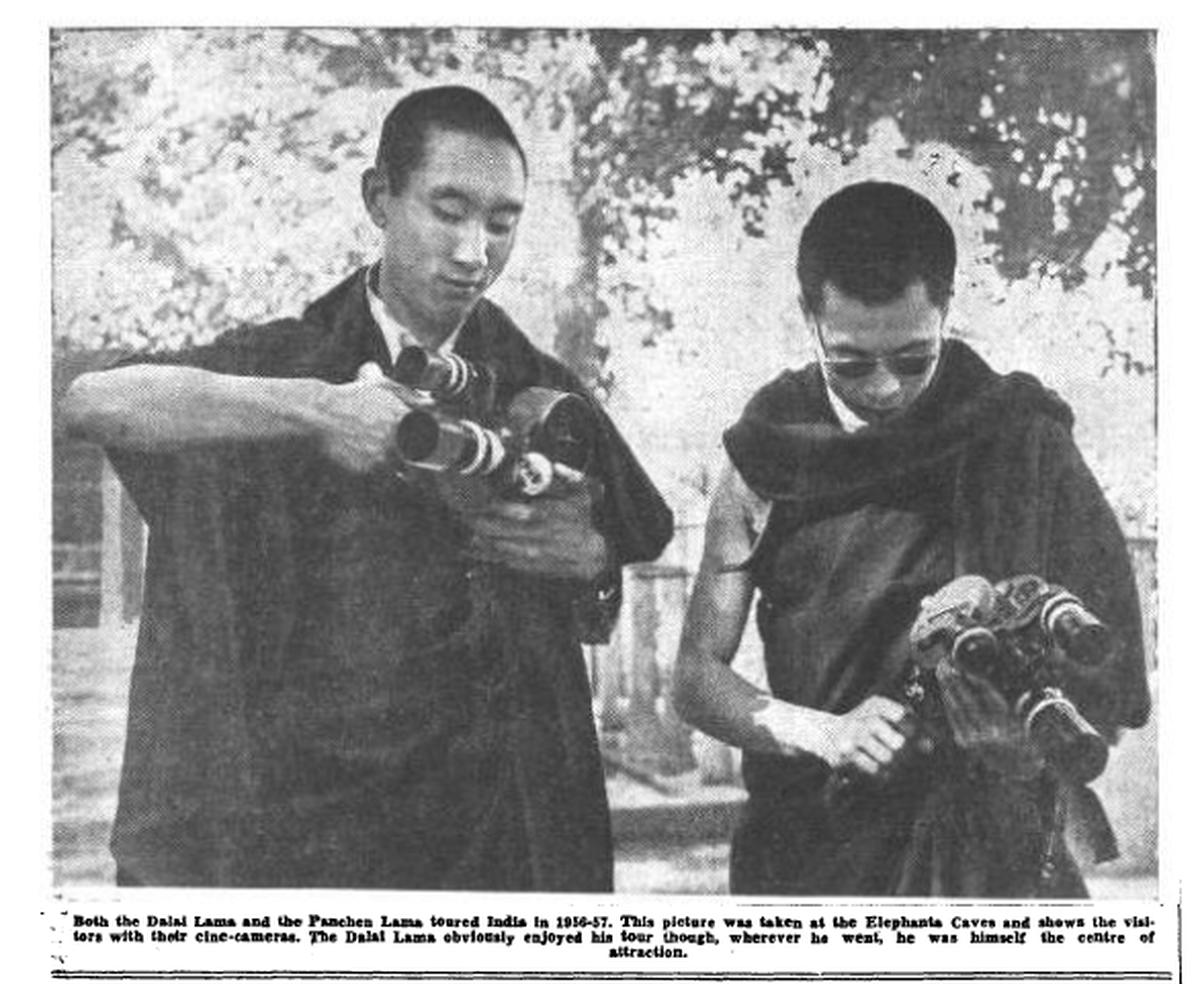
Both the Dalai Lama and the Panchen Lama toured India In 1956-57. This picture was taken at the Elephanta Caves and shows the visitors with their cine-cameras.
| Photo Credit:
The Hindu Archives
In 1956, the Lama made his first piligrimage to India, on the occasion of the 2,500th anniversary of the Mahaparinirvana of Buddha. Three years later, however, he returned to India as a political asylee.
Per the Dalai Lama’s account to the Indian press in later years, a struggle against the Chinese government started in Tibet’s Kham province towards the end of 1955, and grew more serious in 1956. In the ensuing struggle, the Chinese armed forces destroyed a large number of monasteries. “Many Lamas were killed and a large number of monks and officials were taken and employed on the construction of roads in China and the interference in the exercise of religious freedom increased,” the Dalai Lama said.
In February 1959, relations between the Tibetans and Chinese government became more strained. The Dalai Lama was invited to a cultural show at the Chinese headquarters on March 10, but Tibetans became apprehensive that harm would befall him. Thousands gathered near the Dalai Lama’s summer palace at Norbulingka, Lhasa, and prevented him from attending the function. They also demonstrated against Chinese rule in Tibet.
While negotiations were underway, reinforcements from People’s Liberation Army arrived in Lhasa. On March 17, 1959 shelling took place in the direction of Norbulingka Palace, heightening fears about the safety of the Dalai Lama and other top officials.
Soon, the Dalai Lama fled from Lhasa, accompanied by officials and family. Among those with him were his 57-year-old mother, Gyuam Chemo (“Great Mother”), two sisters, and a younger brother.
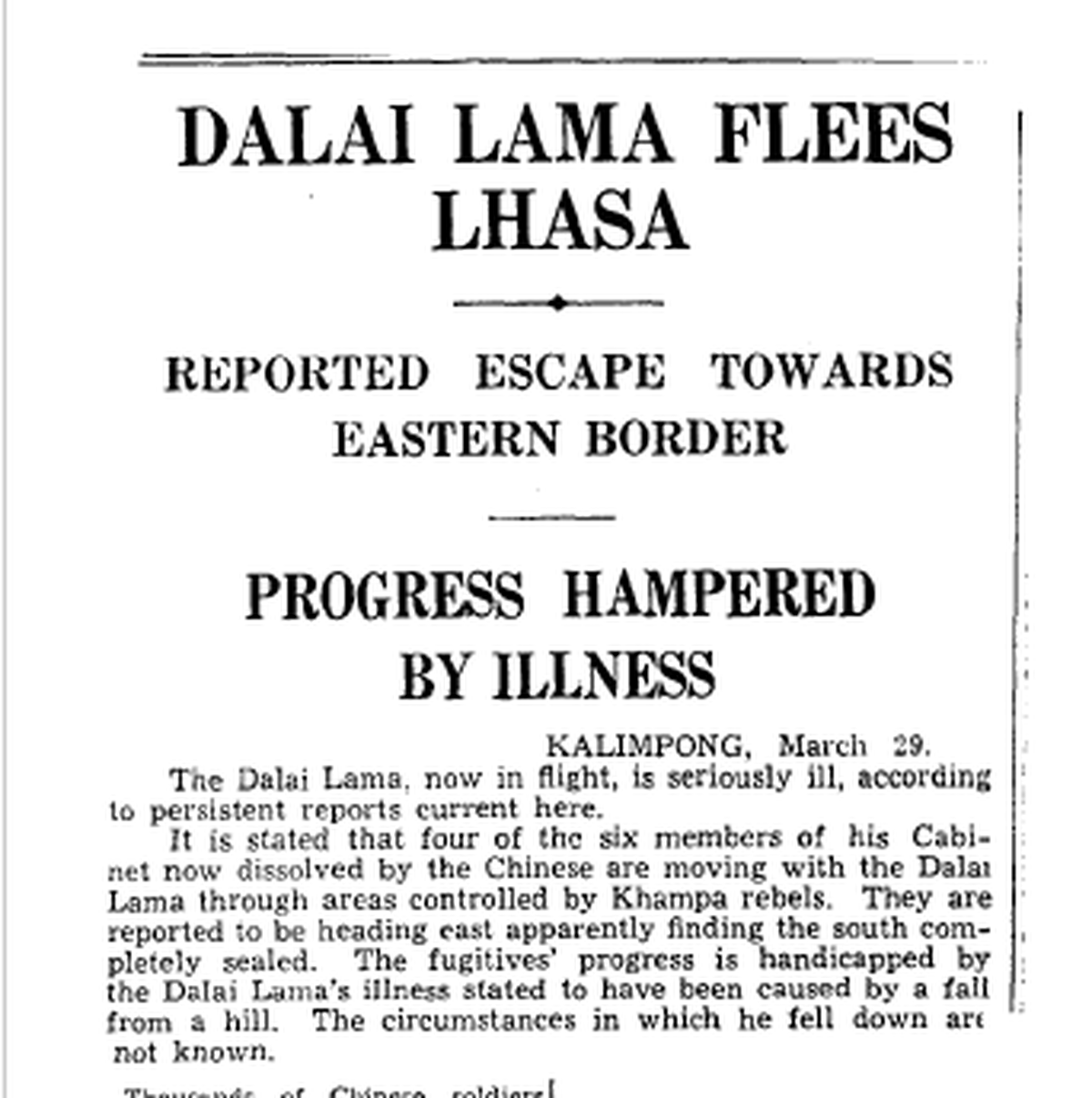
The Hindu’s report on the Dalai Lama fleeing Tibet.
| Photo Credit:
The Hindu Archives
Parts of Tibet came to be under the control of the anti-Chinese rebels, with rebel leader Gonpo Tashi setting up his headquarters in Lhagiar Dzong, Kham. The Lama and his entourage headed first to the south, and then, finding it difficult to break through security to Nepal and India, headed east. They traversed the Himalayan terrain, crossing the Kyichu and Tsangpo rivers, and moving through the Lhoka area, Yarlung Valley and Psonadzong before reaching the Indian border at Kanzey Mane near Chuhangmu, 15 days after leaving from Lhasa.
The Chinese had meanwhile set up up emergency frontier forces along the borders with Nepal, Bhutan, the then princely state of Sikkim, and India. Private communication was strictly censored in Tibet; The Hindu report dated March 29 said that telegrams transmitted out of Tibet were only allowed to say three words- We are safe.
The Dalai Lama crossed over into India on March 31. The details of his entry were shared by the then Prime Minister Jawaharlal Nehru in an address to Parliament: the government received a message from Shillong dated March 31 evening. that an emissary with a message from the Dalai Lama had arrived at the border check-post at Chutangmu in the North-East Frontier Agency, on March 29, stating that the Dalai Lama had sought political asylum. On the evening of March 31, the Dalai Lama, with a small party of 8, crossed over into Indian territory.
His first stop was Tawang, in the remote Kameng division in the North-East Frontier Agency, where India’s largest Buddhist monastery is located, 10,000 feet above sea level, in dense forests inaccessible via helicopter or plane.
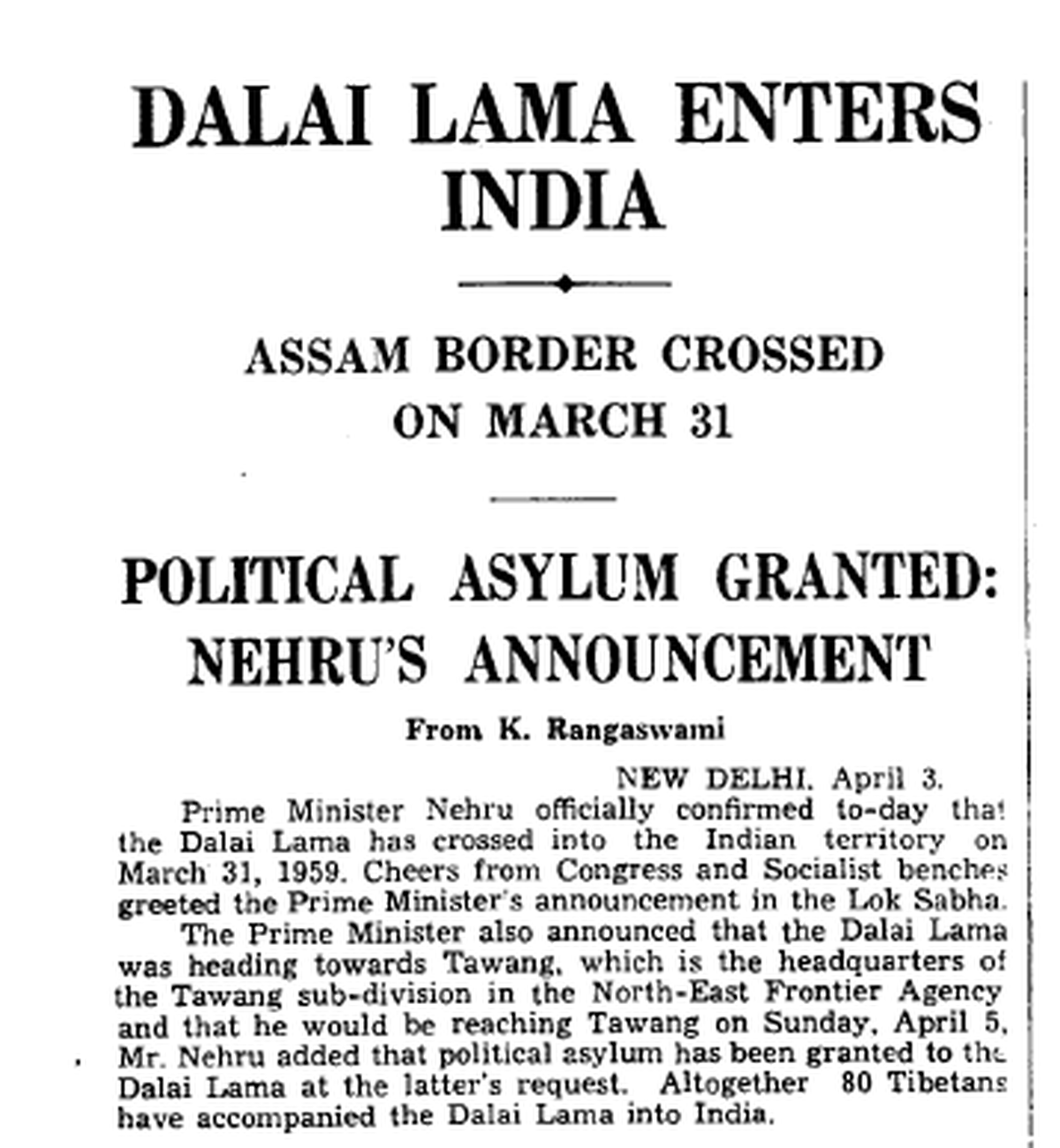
The Hindu’s report on the Dalai Lama’s seeking refuge in India.
| Photo Credit:
The Hindu Archives
At the monastery, monks and devotees welcomed him with salutations and celebratory drum beats. “Rows and rows of butter lamps guttered in the sanctum sanctorum, which resounded to the recitations of the Buddhist tenets,” a report in The Hindu said.
The retinue then passed through Bomdilla. It was met by officials, included P.N Menon of the Ministry of External Affairs, and Capt. Harmandar Singh, Political Officer of Kameng Frontier division. A contingent from Assam Rifles was guarding the area through which the Dalai Lama passed.
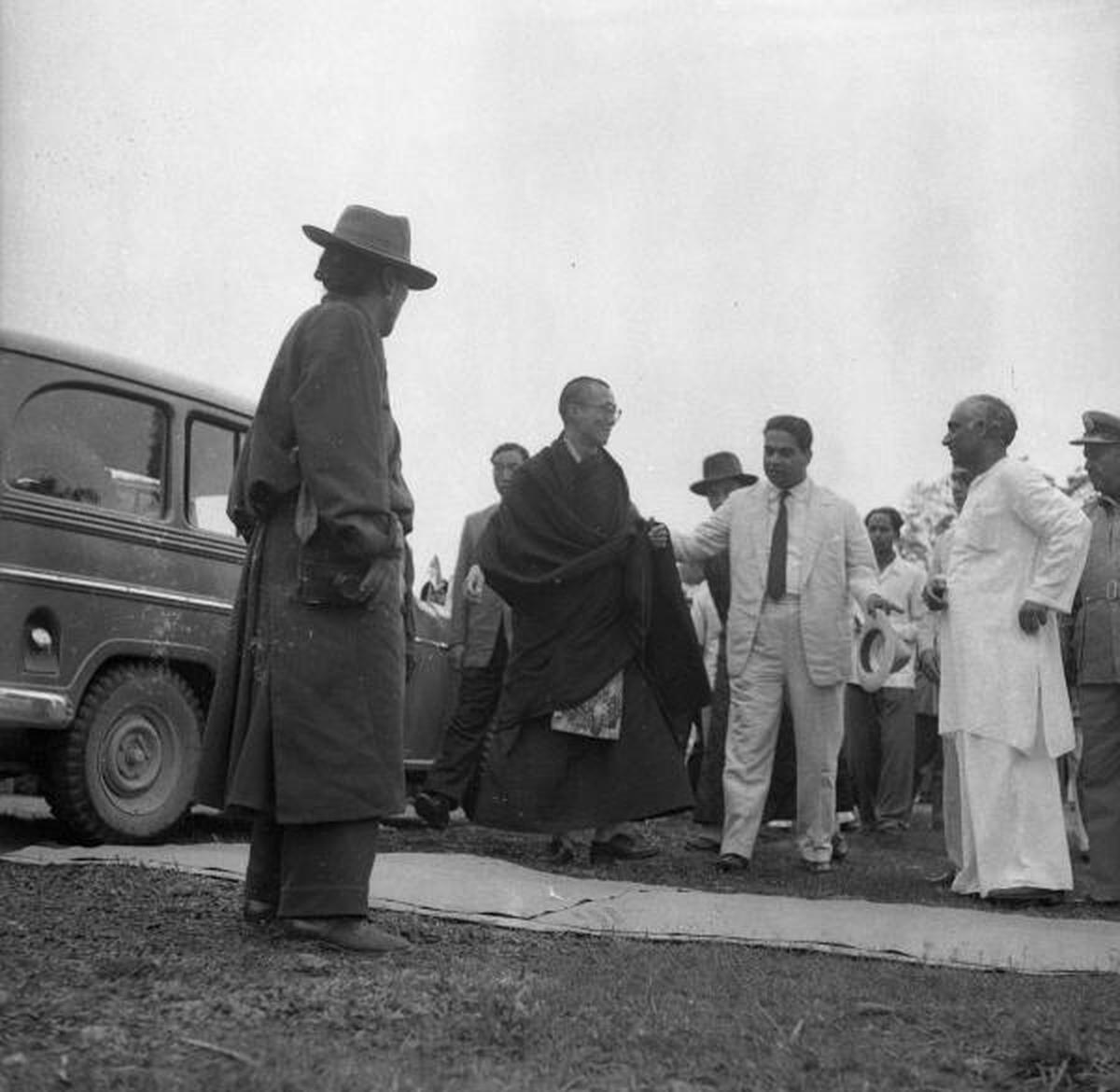
Wearing his dark robes, the Dalai Lama (23) with the External Affairs Ministry official P.N. Menon. (in white suit), who is escorting him. K.N. Tripathi, Minister for Labour, Assam Government, is also seen. The photo was taken when he reached Tezpur in Assam on April 18, 1959.
| Photo Credit:
The Hindu Archives
He arrived in Tezpur on April 18, and discussed several arrangements for his stay with Mr. Menon. Presspersons gathered from all over the world in Tezpur, eager to cover the Dalai Lama’s story. He made his first public appearance at a reception held at Darrang District college grounds, addressing the press and charging China with interference in the internal affairs of Tibet despite the 1951 agreement.
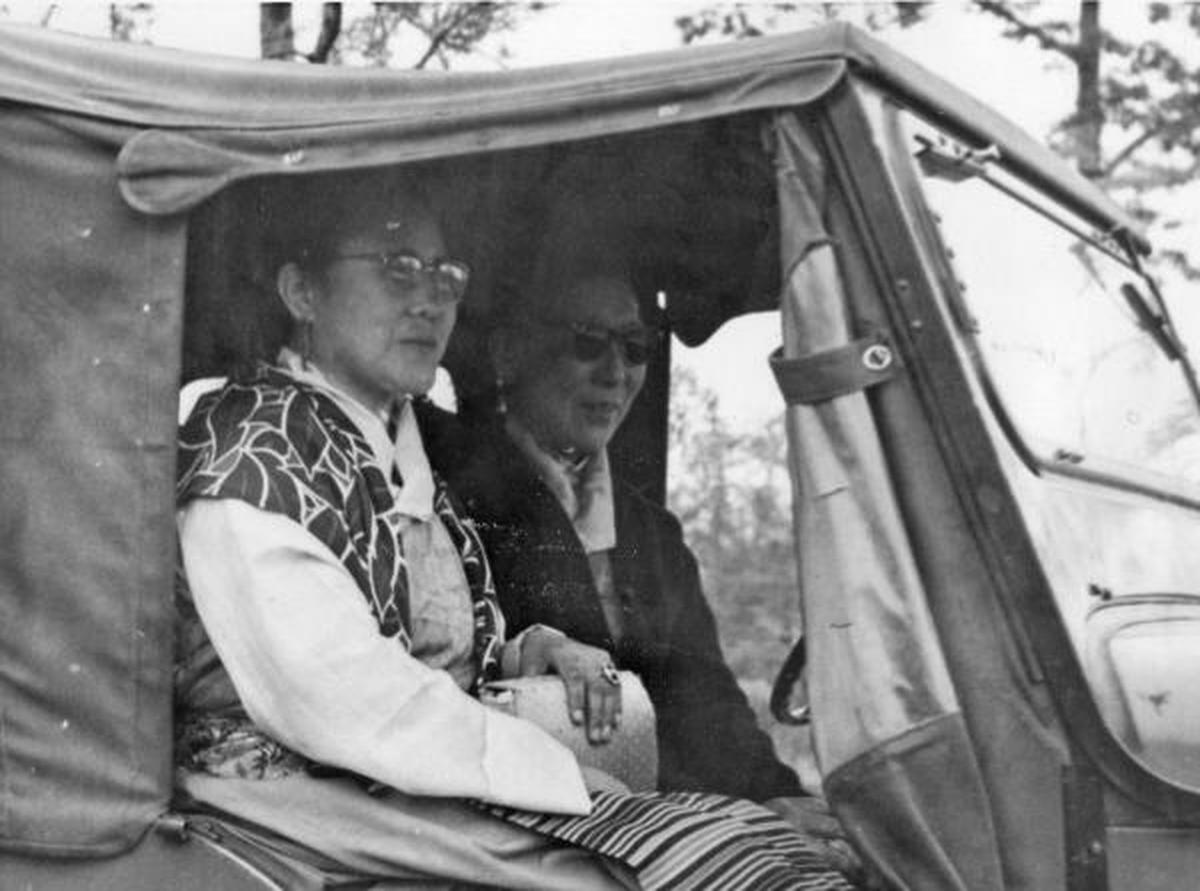
Seated in a jeep as they arrived at the foothills of India on April 19, 1959 are the Lama’s sister (left) and Mother (right) as they arrived with the Dalai Lama and his party at the end of their 33-day trek over the top of the world from Tibet.
| Photo Credit:
The Hindu Archives
Following this, he caught a special AC train to Mussoorie, passing through Siliguri, where his brother’s wife, niece, and nephew, who were staying in Darjeeling, entered the special coach to see him. He was also received by the Maharajakumar of Sikkim and sister, and the mother and wife of the Prime Minister of Bhutan.
The Dalai Lama finally arrived in Mussoorie on April 21, having journeyed for 35 days and crossing around 1,500 miles. He was put up in the Birla House, where Mahatma Gandhi, Jawaharlal Nehru, and Sardar Patel had stayed in the past. On April 24, the Dalai Lama met Prime Minister Nehru.
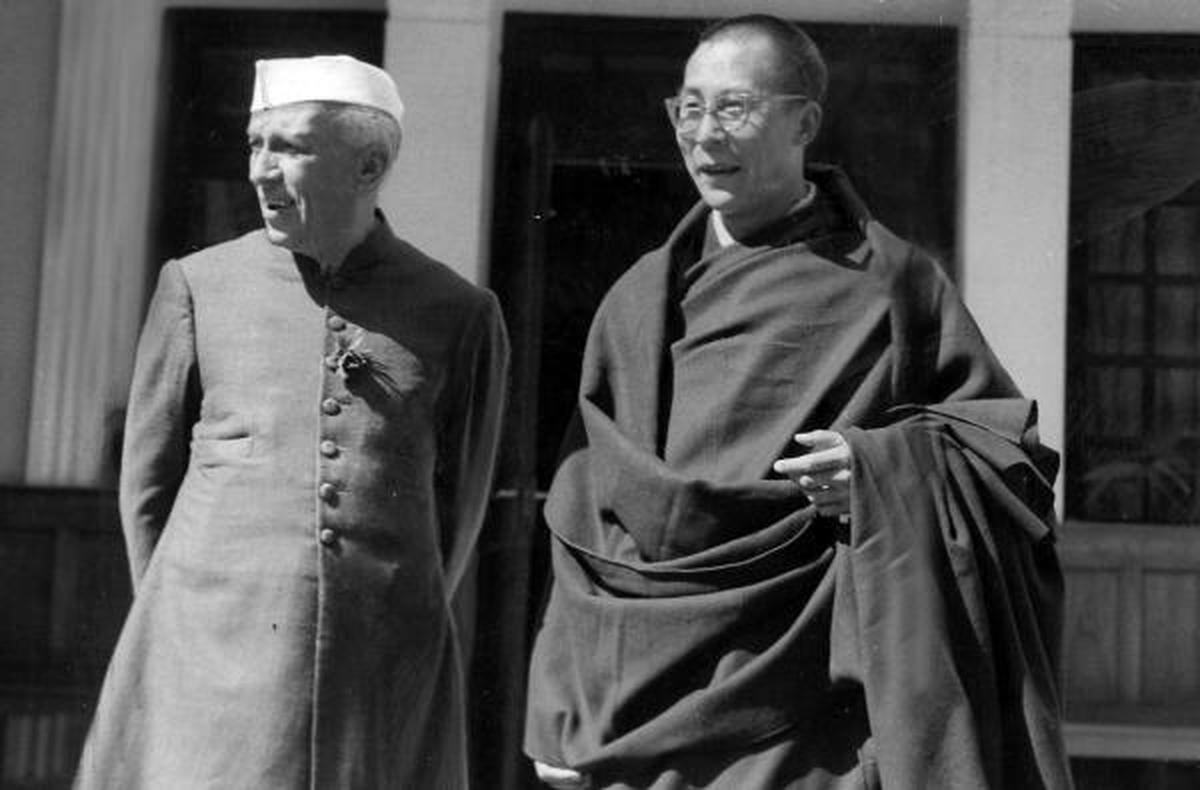
Prime Minister Jawaharlal Nehru with the Dalai Lama when they met at Birla House in Mussoorie on April 24, 1959.
| Photo Credit:
The Hindu Archives
In the succeeding years, India received and granted asylum to thousands of Tibetan refugees. Since 1960, the Dalai Lama has been in Dharamshala, which has earned the epithet Little Lhasa. He has established a ‘Tibetan government-in-exile,’ now known as the Central Tibetan Administration, with a ‘Draft Constitution for Future Tibet.’ There is also a Tibetan Parliament in Exile (TPiE), made up of 45 MPs who are elected representatives of the diaspora in India, Australasia, Europe, and the U.S., and meet for bi-annual sessions in Dharamshala.
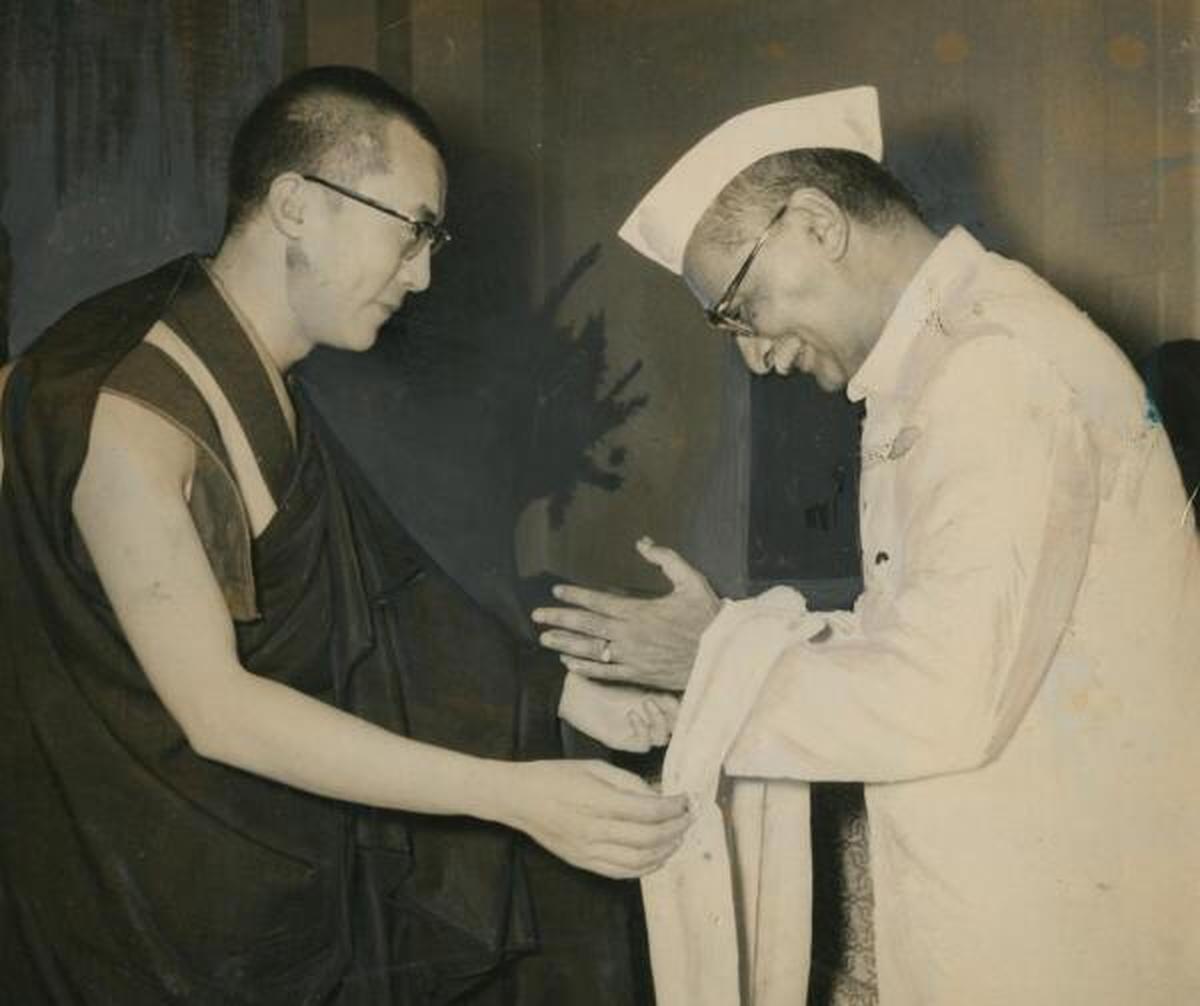
The Dalai Lama, who arrived in Delhi on September 3, 1959, exchanged scarves with Dr. Rajendra Prasad when he called on the President.
| Photo Credit:
The Hindu Archives
www.thehindu.com (Article Sourced Website)
#Escaping #Tibet #Tracing #Dalai #Lamas #journey
